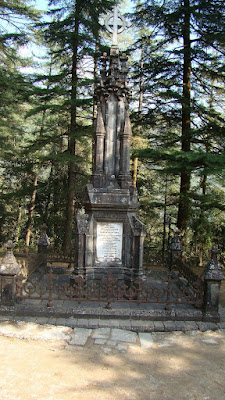District Kangra & Chamba
 Dhauladhar range
Dhauladhar rangeKangra presents an expansive front along the southern foothills of the Dhauladhar range. With only the modest Shivaliks below, Kangra has always give easy access to the monsoons, as well as number of invaders. The rains endowed its temperate lands with rich harvests, and the state became renowned for its prosperity.
 Lord Elgin Church, Macloedgunj. Dharamsala
Lord Elgin Church, Macloedgunj. Dharamsala Jwalamukhi temple, Kangra valley
Jwalamukhi temple, Kangra valleyDeeply religious, the people of Kangra donated generously to the numerous shrines that dotted the countryside. Some temples, like the Brajeshwari Devi temple in Kangra town, had accumulated legendary wealth, and became the irresistible targets of raids from the Turkish sultans.
Kangra fort
Mohammed of Ghazni carted off a fortune in gold, silver and jewels in AD 1009, and the shrines were plundered again in the 14th century by Tughlaqus. Each time the devotion of people proved greater than the rapacity of the raiders, and the shrines invariably recovered in stature. Eventually, under the tolerant reign of Akbar and later Maharaja Rnajit Singh, the shrines were given royal protection, and have since become milestones in the history of an ever strengthening faith.
Today, Kangra’s rain drenched vistas of lush terraces, chain of fruit orchards, and cluster of roof bright with drying corn and red pepper are as inviting to a visitor as they were to the eyes of Turks a thousand years ago.
Buddhist monks at Macleodgunj, learning the sounds....
It is not surprising that the Dalai Lama opted to make this land his home-in-exile. In the town of Dharamsala, the strong Tibetan influence is now an added attraction to the tea gardens that carpet the surrounding slopes. Kangar’s chequered history of the conquests and recovery ensured that it acted as a buffer between Chamba and change. While Kangra suffered strife, continuously experiencing different rulers, Chamba - across the Dhauladhar - remained physically untouched because it formally acceded to whoever controlled Kangra. This insulation ensured an unbroken tradition of medieval Hinduism in the district, symbols of which are still in evidence today.

